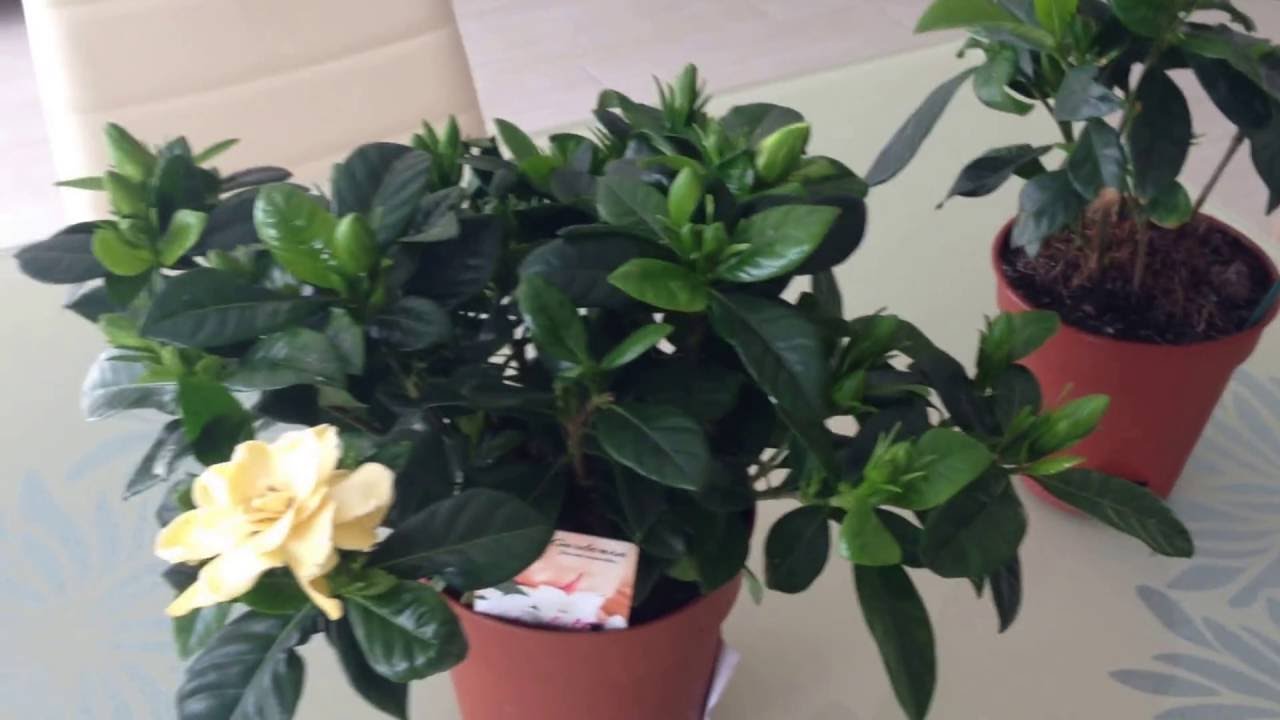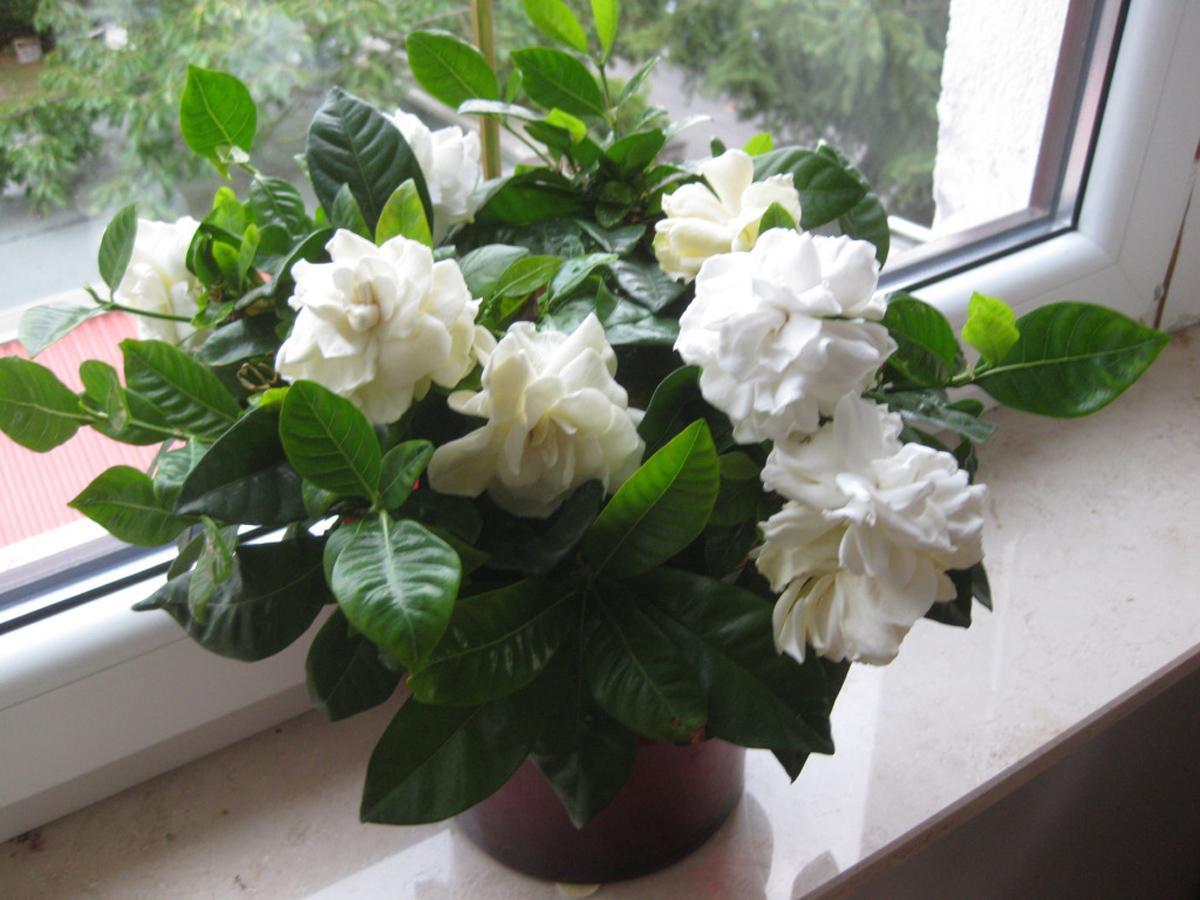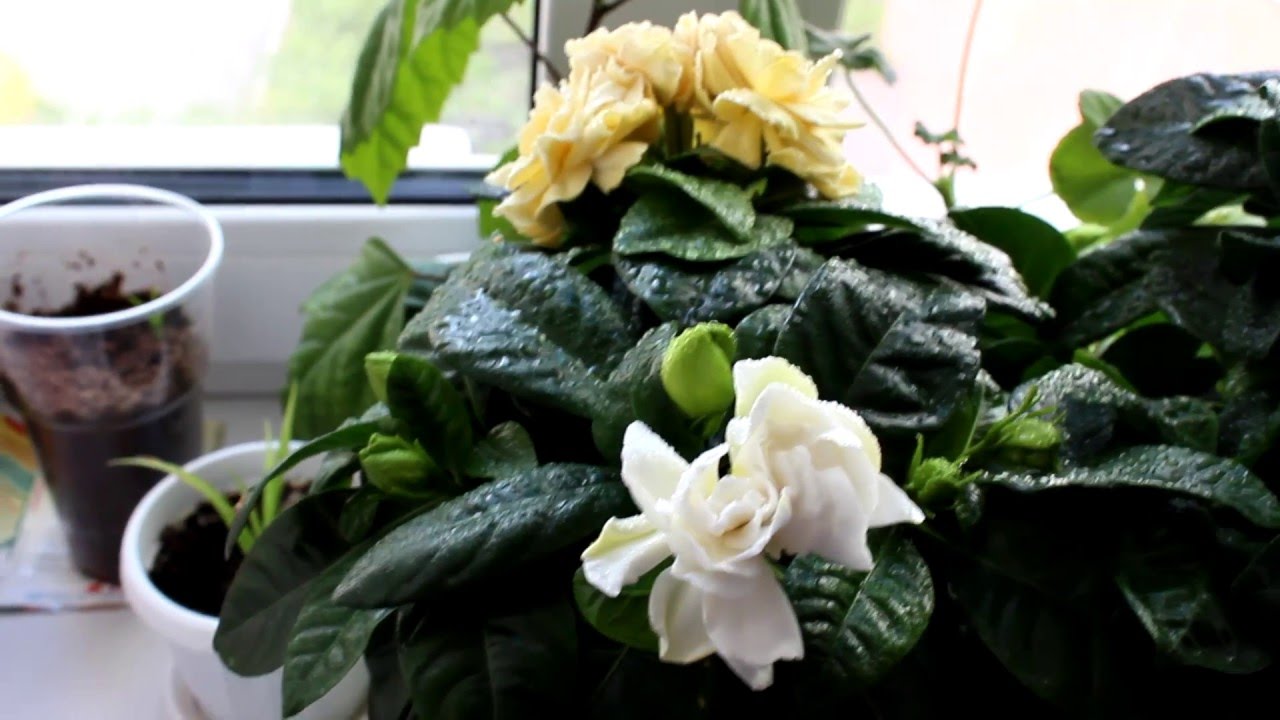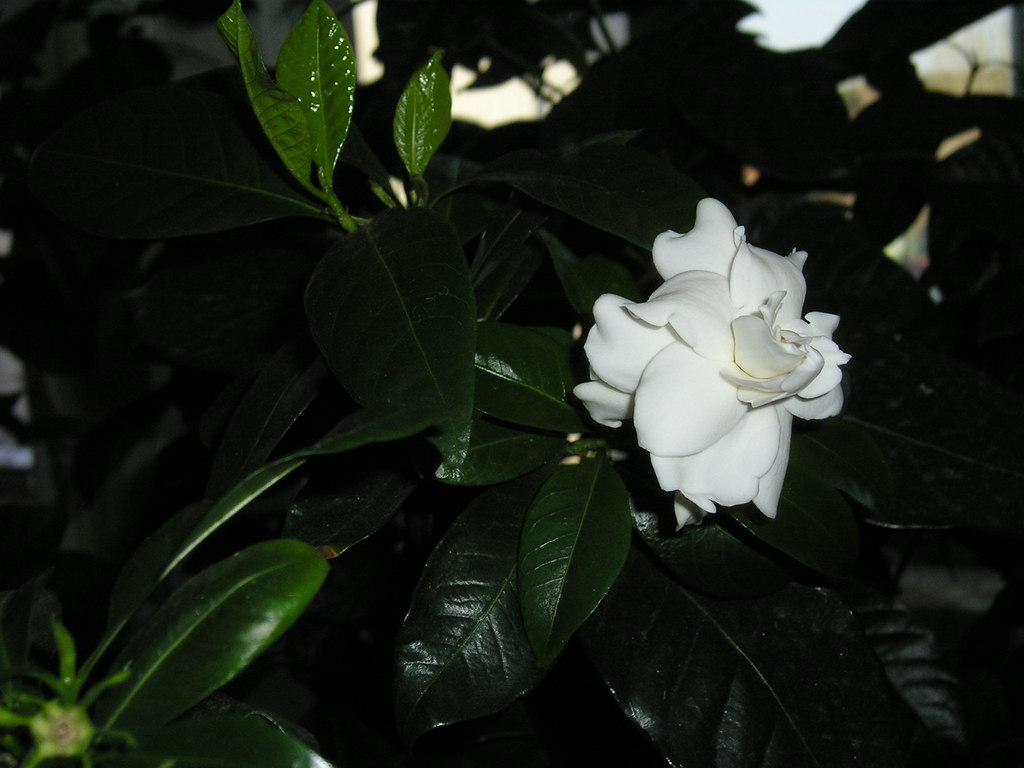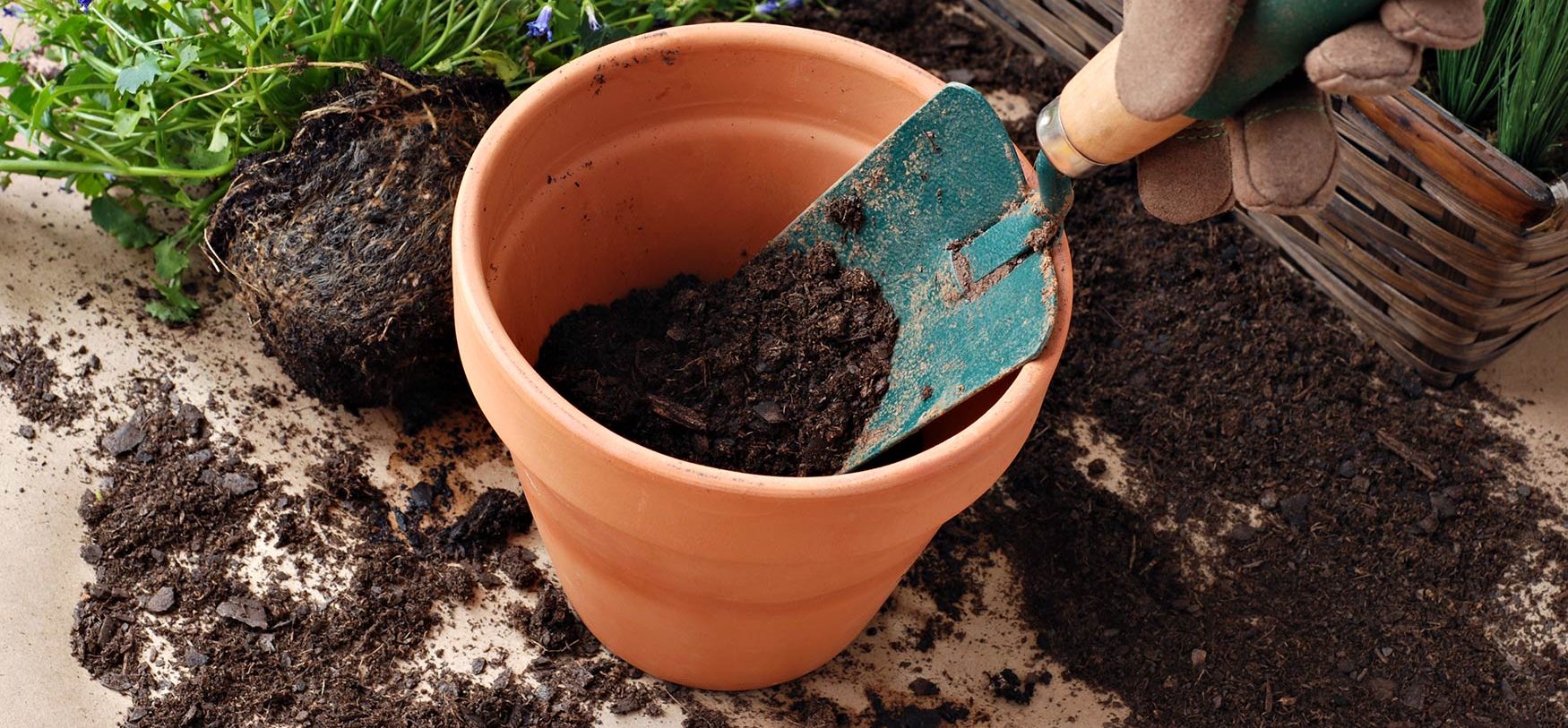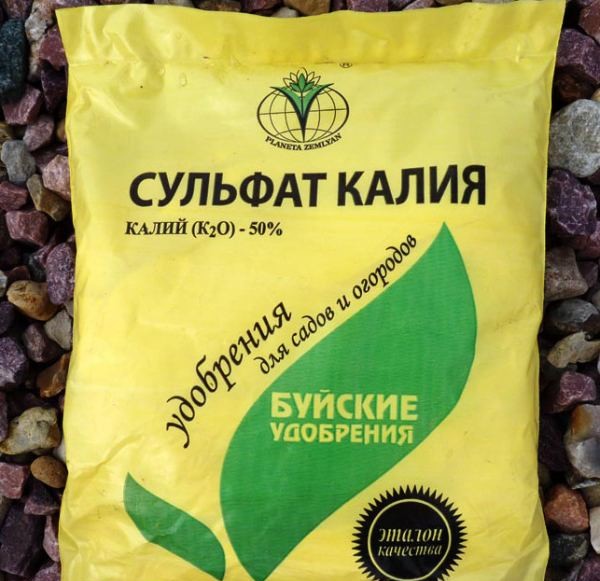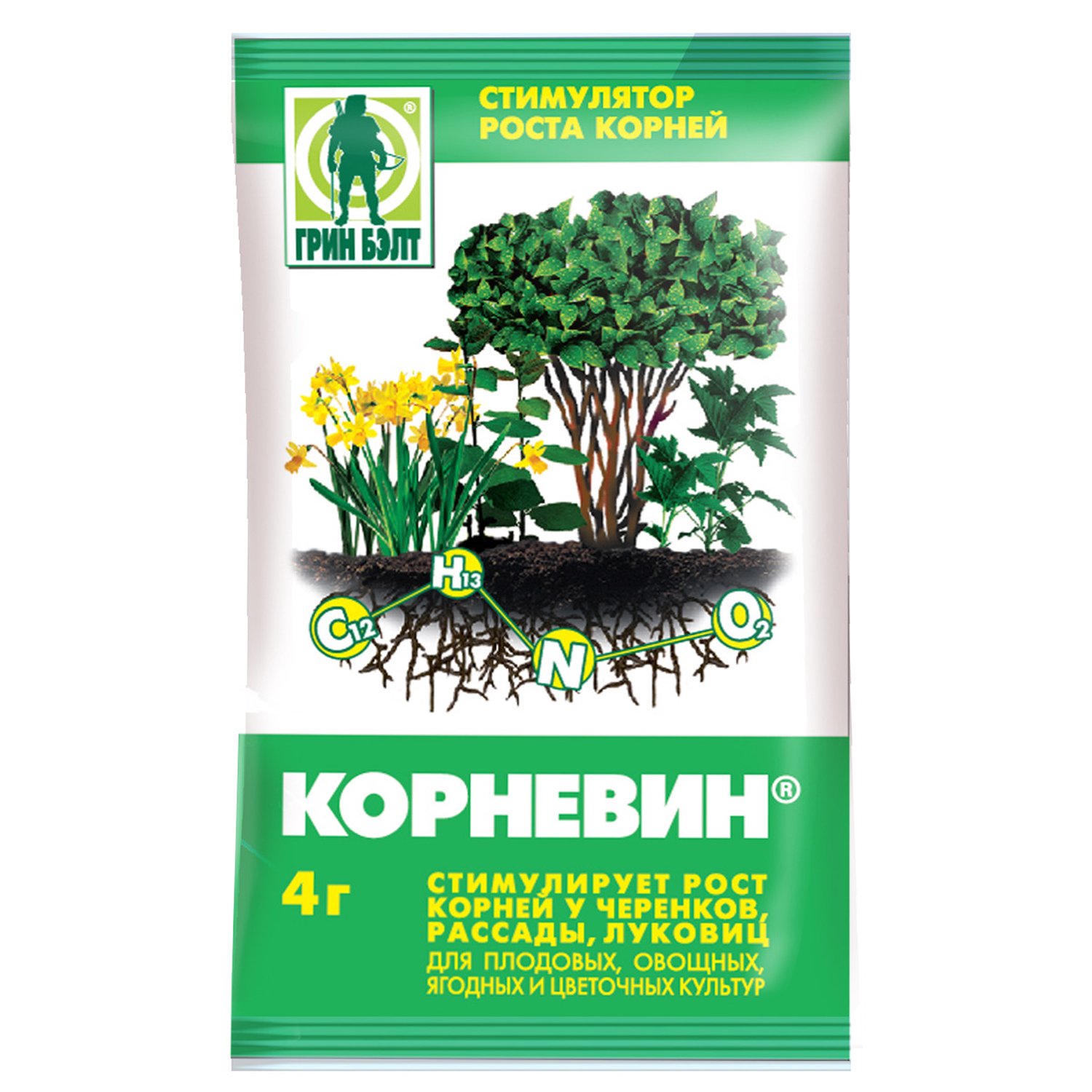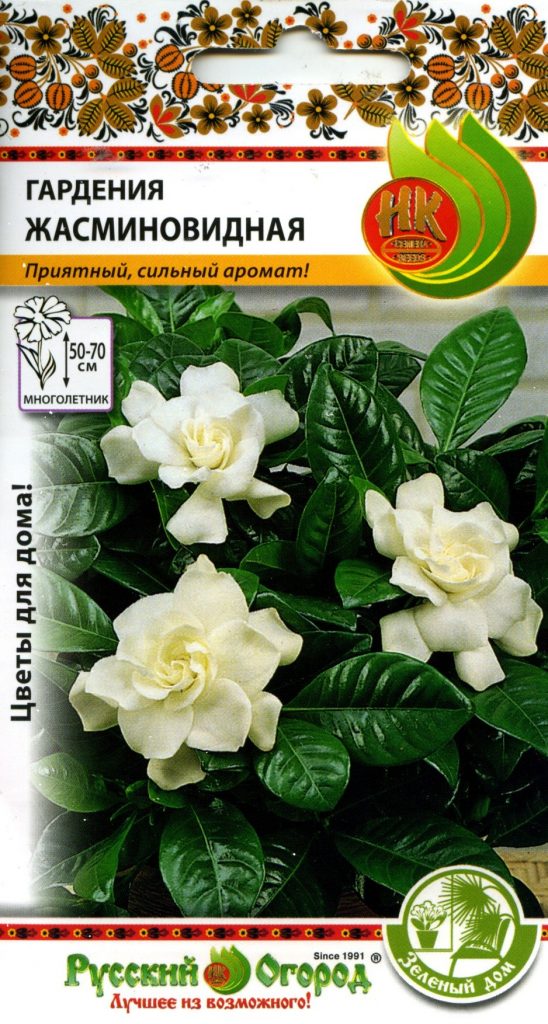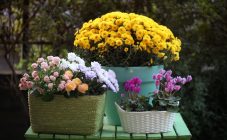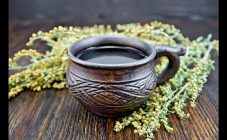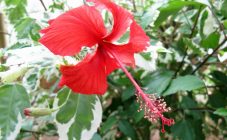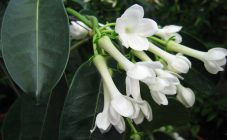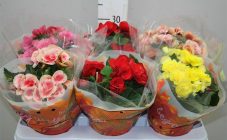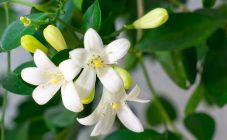Content:
Gardenia belongs to the Madder family. The flower with a wonderful scent first gained worldwide fame in the middle of the 13th century. The American botanist Garden described in detail the snow-white beauty that was named after him - gardenia jasmine. In Europe, the plant appeared in the 18th century, grows naturally in southern countries.
Description
For decades, Chinese breeders have been engaged in the formation of a flower bush in the form of a miniature tree, blooming profusely, until they bred an indoor shrub of incredible beauty.
It is impossible not to fall in love with a flower, it is difficult to take your eyes off its snow-white double petals. But its beauty is tantamount to capriciousness - a careless attitude towards a flower can provoke a stop in its growth.
At a flower that is called a Chinese beauty:
- leaf - shiny, smooth, oval, bright green, 8 cm long;
- flowers - large, snow-white, terry inflorescences, 8-9 cm in diameter;
- bush - lush, low, each with 6-7 flowers;
- indoor plant height - 55-70 cm;
- garden plant height - 1.5 m;
- aroma - strong, sweetish, pleasant.
In natural conditions, gardenia blooms twice a year.
Popular types:
- Radikan variega is a dwarf variety, a bansai bush is formed from it;
- Kula - spatula-shaped petals, golden in color;
- Beauty - differs in abundant flowering, flowers - large, double;
- Chuck Hayes - he has semi-double cream flowers;
- Fortune - large double flowers, light sandy color;
- Tahitian - has a narrow, elongated petal shape;
- Vetch - white, double, glossy flowers.
Care
It is necessary to take care of pride competently, then there will be no question: why does the flower shed its leaves, change their color, and the petals begin to turn yellow. If you decide to grow a jasmine gardenia, you need to pay constant attention to its care.
Gardenia jasmine requires good lighting all year round, but does not tolerate direct sunlight. With a lack of sunlight, the plant stops growing, its inflorescences fall off, it becomes lethargic. If there is not enough lighting, it is necessary to organize artificial lighting with special lamps.
If the shrub is indoor, the flowerpot is placed on the windowsill, which is located on the east or southwest side. In bright sun, the gardenia is provided with diffuse light and shading by:
- jalousie;
- paper or tracing paper;
- light curtains.
The buds of flowers are born at the tips of the branches, they are drawn towards the light, so the bush must be cut off, forming a beautiful decorative shape.
Terms
For gardenia jasmine when caring at home, you must:
- creation of a favorable microclimate;
- compliance with the temperature regime;
- there must be correct illumination;
- fertilize periodically;
- cut and replant the plant in time.
Gardenia reacts painfully to a change of place and to turns of a flower pot, slows down its growth, even stops flowering.Protect your gardenia from drafts and sudden changes in temperature.
Temperature
The best temperature for flower life is 22-24 degrees Celsius. In winter, buds begin to form on the branches, at a temperature of 18 degrees Celsius, they develop well, at a higher temperature, there is an enhanced growth of shoots, and the number of buds decreases.
Watering
For irrigation, rain, melt or river water is used. Tap water is defended during the day, leaving the container open to evaporate chlorine.
In the summer, water in moderation every other day. In winter - 1-2 times a week.
Twice a month it is watered with water acidified with lemon juice.
It is useful to water the gardenia with jasmine water infused with peat.
Drainage is poured at the bottom of the pot so that excess moisture does not accumulate at the root.
The leaves are periodically sprayed without getting moisture on the bud. In order not to damage the unblown flower, it is better to put a vaporizer next to the plant.
Priming
The beauty and vitality of gardenia is directly dependent on the composition of the soil. At the first planting of a flower, the soil is fertilized; when the earth is depleted, the flower is transplanted into a new fertilized soil.
The soil is selected acidic, moisture resistant, it is a mixture of coniferous-peat or heather.
For gardenia, the following soil composition is recommended:
- peat;
- coniferous land;
- derain;
- sand;
- ground from under fallen leaves.
All are taken in equal parts, drainage must be poured under the ground, before boiling it.
Fertilizer
Gardenia has a well-developed root system, growing, it depletes the soil, therefore regular plant nutrition is required.
The applied fertilizers should increase the acidity of the soil. To build up green mass, the plant needs nitrogen, potassium and phosphorus are added to the soil to form buds.
If the leaves began to turn yellow, this is a bad omen, which means that feeding with iron sulfate is necessary.
Reproduction at home
Gardenia jasmine is propagated by cuttings and seeds.
Propagation by cuttings
The stalk must be partially woody, it is cut off at the end of February with a heel or during the formation of a bush, 12-15 cm in size.
When the plant grows to 20-25 cm, pinch it. They are planted in peat soil with the addition of sand, before dipping the cutting into a growth stimulator.
A gardenia seedling does not take root well; for better rooting, growth stimulants are added:
- Heteroauxin tablets;
- drops of Epin;
- powder Kornevin.
To keep more moisture in the seedling, each leaf is cut from the cutting to half, the leaves should not touch the ground. The soil should be the same as that of an adult plant.
The container with the seedlings is placed in a warm place for better rooting, or provided with moderate heating from the bottom.
To maintain the microclimate and ensure constant moisture, the seedlings are covered with foil.
After 30-35 days, the stalk takes root, it can be transplanted into a permanent pot.
After six months, the jasmine gardenia blooms, it is fed with fertilizer and looked after like an adult plant.
Seed propagation
Buying seeds is a responsible task, they must be of high quality and strong. Before planting, they are soaked in a manganese solution. In a well-fertilized and moist soil, seeds are sown to a depth of 0.5 cm, sprinkled with earth, tamped and watered. They put the box with the sowing in a warm place, observe the air temperature of 24-26 degrees, cover with foil.
The ground is lightly sprayed with water daily.
This method of cultivation is longer than cuttings - the first shoots will hatch in 3-35 days, and the buds will appear in 1.5-2 years.
Plant transplant
Gardenia does not take root well, therefore, with any method of transplantation, the root system is treated with a growth stimulator.
Gardenia is transplanted:
- immediately after purchase;
- adult - 2 times a year;
- young - once a year.
Before transplanting, the bush is watered abundantly and transplanted in the following order:
- after the earth has softened, lightly tap on the pot, holding it in an inclined position;
- when the earth separates from the pot, carefully remove the plant with an earthen clod, shake it slightly so that the earth crumbles from the root;
- remove dried or rotten roots;
- soak the root part in a weak manganese solution for 25-30 minutes;
- Cover a new pot with a third of fertilized soil, plant a plant there and cover with the remaining soil.
- lightly tamp the ground and water well.
Outdoor gardenia is grown only in regions with warm climates.
Under natural conditions, it is undemanding and blooms from June to September. The shrub is propagated by cuttings and seeds, having previously grown them in a container before rooting, then planted in open ground. The land should be fertilized and watered before planting. Further transplants are not required for the shrub. The planting site is chosen near a fence, at home or near trees. Direct sunlight should not constantly hit the shrub.
Diseases and pests
Gardenia jasmine is susceptible to viral, fungal and bacterial diseases.
The root of the plant affects the mealybug. Gradually rising up, it destroys the stem and leaves. Many white balls appear on the stem and leaves, in which the larvae of the worm live, eating the plant.
With a fungus, spots appear on the leaves of a plant, a gray bloom, gradually the leaves die off and fall off.
Thrips are small and invisible on the leaves. The disease can be detected by thrips extremities and small holes in the flower. Leaves fall on the affected plant.
Aphids like to settle at the top of the flower, covering it with sticky secretions.
If the scale insect has settled, the leaves turn yellow on the plant, brown spots appear. Immobile black insects inhabit the leaves and feed on the sap of the plant.
The spider mite enmeshes the bush with cobwebs, the leaves begin to turn yellow, and the plant dries.
If insects appear on the plant, the leaves are gently washed with warm soapy water, then treated with a complex pesticide according to the schedule specified in the drug's instructions.
Subject to simple care requirements, the oriental beauty, the jasmine gardenia, will decorate the interior with snow-white inflorescences and fill the surrounding space with a pleasant aroma.
